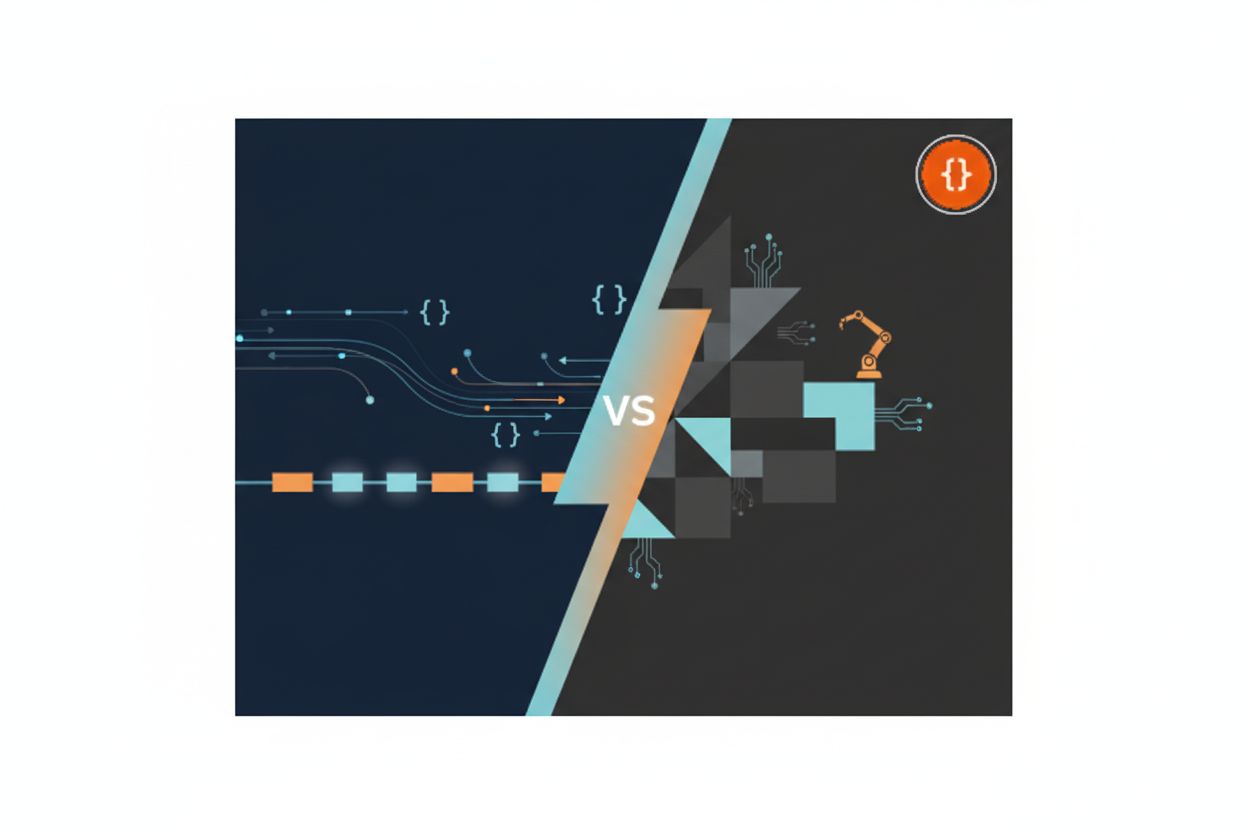API Contract Testing Safeguarding Integrations and Preventing Chaos
TL;DR
API Contract Testing: Safeguarding Integrations and Preventing Chaos
Understanding API Contract Testing Core Principles
Alright, let's dive into api contract testing! Ever wonder how to stop your services from yelling at each other in production? Well, contract testing is a key part.
Here's the gist:
- It's all about having a formal agreement, like a digital handshake, between your api provider and consumer.
- This agreement spells out the expected data formats, endpoints, and behaviors. (Data contract 101 — Everything You need to Know - Medium) testrigor mentions that contracts can be consumer-driven or provider-driven, which is pretty neat.
- The main idea is to validate api interactions against this said contract, ensuring everything plays nice.
Think of it like this; if a retail app expects a product price to always be a number, the contract test makes sure the api never sends back "expensive" instead.
Now, let's move on to how we can define these api contracts in detail.
Why API Contract Testing Matters
Contract testing – is it worth the hype? Absolutely, and it's all about preventing chaos between services.
- Early detection is key. Catching breaking changes before they hit production, like, for instance- when a finance app suddenly can't process credit cards due to an api update.
- Runtime errors? No thanks. Contract testing nips those in the bud, avoiding service failures and data mismatches, keeping your e-commerce platform running smoothly, even during peak hours.
- Think of healthcare: ensuring patient data flows correctly between systems, not just sometimes but all the time. HL7 (Health Level Seven) standards are a set of international standards for the transfer of clinical and administrative data between software applications used by various healthcare providers. They ensure that different healthcare systems can communicate and exchange patient information accurately and consistently, which is crucial for patient safety and efficient care. Contract testing can help verify that data exchanged adheres to these vital HL7 standards.
Ready to see how this speeds up development?
Consumer-Driven vs Provider-Driven Contracts: Choosing Your Path
Ever wrestled with deciding who sets the api rules? It's a common head-scratcher.
- Consumer-Driven Contracts (CDCs) lets consumers define what they need, like a mobile app dictating the data format from a backend service.
- Provider-Driven Contracts flips this; the api provider sets the standard, and consumers gotta adapt, ensuring consistency.
- Hybrid approaches? Yup, you can mix it up for a balance. For example, you might use consumer-driven contracts for your core internal services where consumers have clear needs, but a provider-driven approach for public-facing APIs where you want to maintain a consistent brand experience. This is especially useful when external services need to play nice with your internal systems, or vice-versa, allowing you to tailor the contract approach to the specific integration context.
Next up: diving into consumer-driven contracts!
API Contract Testing Techniques: A Practical Toolkit
API contract testing techniques are your swiss army knife for integration challenges. What tools are in your toolkit?
Here's a few essential techniques to keep your api integrations smooth:
- Schema Validation: This technique validates the structure of requests and responses to ensure they match the contract. For example, a finance api might require that currency values always comes back as a number, not a string.
- Mocking and Stubbing: Simulate api behavior for isolated testing. Imagine a retail app testing its checkout flow with a mocked payment gateway, ensuring it handles different scenarios without actually processing real transactions.
- Contract Verification: Use automated tests to verify compliance with the contract. These tests can be integrated into your ci/cd pipelines to catch issues early. For instance, when exchanging healthcare data, contract verification tests can be configured to specifically check that the data structure and values conform to established standards like HL7, ensuring that critical patient information is formatted correctly and can be understood by receiving systems.
Let's move on to implementing API contract testing step-by-step.
Step-by-Step API Contract Testing Implementation
So, you're ready to put contract testing into action? Let's walk through the steps – it's not as scary as it sounds!
Step 1: Define Your API Contract This means documenting it using standards like OpenAPI, because everyone needs to be on the same page. Think of a finance api; the contract specifies how transactions must be formatted. If it ain't right, it ain't going through.
Step 2: Develop Tests Based on the Contract These tests validate request and response payloads. Like, say your retail app expects a product ID in a specific format; your test gotta check that.
Step 3: Execute Those Tests in Your CI/CD Pipeline Generate reports and identify contract violations. If something goes wrong, you wanna know before it hits prod.
Let's move on to the next topic!
API Contract Testing Tools of Trade
Alright, so you wanna know what tools are gonna help ya with api contract testing, huh? Well, buckle up, because there's a few good ones out there.
- APIFiddler can be your new best friend. It provides free ai-powered tools for REST api testing, performance analysis, security scanning, and documentation generation. While it's a general API testing tool, its capabilities in testing, analysis, and documentation generation can be adapted and leveraged for API contract testing purposes by defining and validating expected API behaviors.
- Pact is awesome for consumer-driven contract testing. Plus, it supports a bunch of languages and frameworks, so you're probably covered.
- Swagger Inspector is another solid choice. It's great for api design and documentation, and it validates api definitions against the OpenAPI specification, keeping things nice and tidy.
Choosing the right tool depends on your specific needs, right?
Now, let's dig a bit deeper into leveraging free api testing tools.
Overcoming Common API Contract Testing Challenges
Contract testing ain't always a walk in the park, right? So, what kinda roadblocks do you usually hit?
- Versioning API Contracts: Changes happen, but breaking things is a no-go. Employ versioning strategies to keep things backwards compatible. Think of it like this, your retail app needs a new field for product descriptions, but old versions can still work if the field is optional.
- Handling Complex Data Structures: Ever dealt with nested JSON objects? It can be a pain. Make sure you're validating data types and formats. For example, a healthcare api might have patient records with nested address info that needs rigorous validation.
- Dealing with Asynchronous APIs: Testing event-driven systems? Validate message queues and event streams. A finance app might use queues to process transactions; contract tests ensure the queue messages are formatted correctly.
Next up, we will discuss best practices for a robust API contract testing strategy.
Best Practices for a Robust API Contract Testing Strategy
Contract testing, huh? Think of it like setting ground rules before the party starts to avoid total chaos. So, how do you make sure your api contract testing strategy is actually, well, robust?
- Automate those contract tests in your CI/CD pipelines. This ensures continuous validation, not just a once-in-a-blue-moon check. Tools like testrigor, as mentioned earlier, can help integrate these automated checks seamlessly into your workflow, enabling you to catch contract violations early in the development cycle, even before they reach a dedicated test environment.
- Get everyone involved in defining the contracts, not just the devs. QA, ops, even product owners should weigh in. Think of it as a team sport.
- This promotes better communication and a shared understanding and avoids downstream confusion.
- Regularly review your contract test results. Don't just set it and forget it, alright?
- Update your tests as your apis evolve. Versioning is key to managing these changes gracefully.
Contract testing ain't a one-time thing; it's ongoing.





